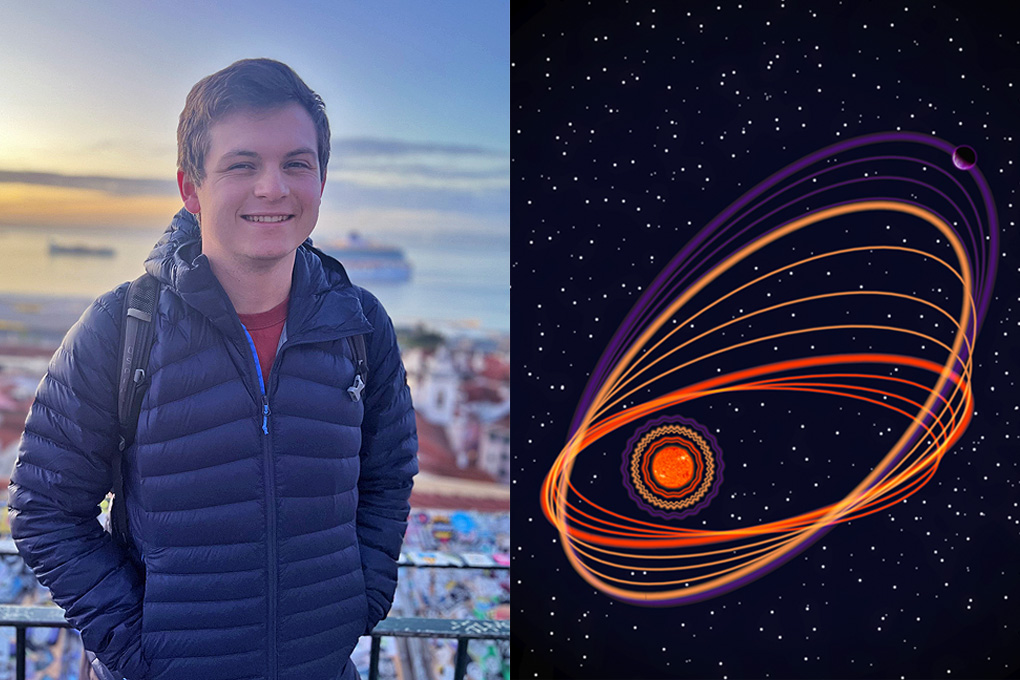A collaboration of astronomers from MIT, the University of Liège in Belgium, and other institutions has unveiled a remarkable discovery: a gigantic, fluffy planet orbiting a distant star within our Milky Way galaxy. This groundbreaking finding, detailed today in the journal Nature Astronomy, offers significant insights into the formation processes of such enormous, lightweight planets.
This newly identified exoplanet, dubbed WASP-193b, surpasses Jupiter in size while boasting a remarkably low density. Researchers estimate that WASP-193b is about 50 percent larger than Jupiter yet has only one-tenth of its density—an astonishingly low value comparable to that of cotton candy.
WASP-193b holds the record as the second lightest planet found to date, following the smaller, Neptune-like Kepler 51d. The planet’s impressive size combined with its super-low density positions it as an extraordinary example among over 5,400 known exoplanets.
Lead author and MIT postdoctoral researcher Khalid Barkaoui states, “Finding such massive objects with minimal density is exceedingly rare. There’s a classification known as puffy Jupiters, and this has puzzled scientists for 15 years. WASP-193b is an extreme case in that category.”
Co-lead author Francisco Pozuelos, a senior researcher at the Institute of Astrophysics of Andalucia in Spain, adds, “This planet is an outlier in all current formation theories. We can’t explain its birth using traditional models. Analyzing its atmosphere in more detail will provide insights into its evolutionary history.”
Among the research team are MIT co-authors Julien de Wit, an assistant professor in the Department of Earth, Atmospheric and Planetary Sciences, and postdoc Artem Burdanov, along with numerous collaborators across various European institutions.
An Exciting Discovery
This unusual planet was detected by the Wide Angle Search for Planets (WASP), an international initiative publicizing the efforts of several academic institutions operating two robotic observatories located in both the northern and southern hemispheres. These observatories utilize wide-angle cameras to monitor the brightness of thousands of stars across the sky.
Observations gathered between 2006 and 2008, and again from 2011 to 2012, revealed periodic transits from WASP-193—a bright, sun-like star situated approximately 1,232 light-years from Earth. The recurring dips in brightness observed from the star suggested the presence of a planet completing an orbit every 6.25 days, allowing scientists to infer the planet’s massive, super-Jupiter dimensions.
The next step involved estimating the planet’s mass—a crucial metric that would, in turn, reveal its density and provide hints about its composition. Typically, astronomers employ radial velocity methods to gauge a planet’s mass by observing the spectrum of its host star. Changes in a star’s spectrum indicate gravitational pulls from orbiting planets. The larger and closer a planet is, the more significant the observed shift in the spectrum.
For WASP-193b, the team conducted high-resolution spectroscopic observations using various ground-based telescopes, attempting to apply the radial velocity method to derive the planet’s mass. However, they faced challenges as the planet was too light to create a detectable gravitational influence.
“Usually, astronomers can easily spot large planets because of their significant mass, which generates a strong pull on their star,” de Wit clarifies. “But WASP-193b was unique; despite its large size, its mass and density were so low that detecting it through the radial velocity method proved difficult.”
“WASP-193b’s mass signal was so faint that it took four years of data collection to establish it,” adds Barkaoui.
“Initially, we received surprisingly low density readings that were hard to accept,” Pozuelos admits. “We meticulously verified all data analyses multiple times to confirm the planet’s genuinely rare density.”
An Inflated Planet
Ultimately, the team concluded that WASP-193b indeed possesses an extraordinarily light mass, calculated to be approximately 0.14 times that of Jupiter, with a density of about 0.059 grams per cubic centimeter. By contrast, Jupiter’s density measures around 1.33 grams per cubic centimeter, while Earth’s density is a sturdy 5.51 grams per cubic centimeter. Interestingly, cotton candy, known for its airy texture, has a similar density of about 0.05 grams per cubic centimeter.
Barkaoui notes, “The planet’s lightness makes it challenging to conceptualize a solid-state equivalent. Its similarity to cotton candy arises from their shared composition of light gases rather than dense solids. Essentially, this planet is extremely fluffy.”
The researchers theorize that WASP-193b primarily consists of hydrogen and helium—elements common among gas giants throughout the galaxy. These gases likely contribute to an inflated atmosphere that extends tens of thousands of kilometers beyond Jupiter’s atmosphere. How such a planet can achieve extensive inflation while maintaining exceptionally low density remains a question that current planetary formation theories cannot answer.
To enrich their understanding of this fluffy exoplanet, the team will employ a method developed by de Wit to analyze specific characteristics of the planet’s atmosphere, including its temperature, composition, and pressure at various depths. This information will help refine the determination of its mass. They anticipate that WASP-193b will be an ideal candidate for further study with observatories like the James Webb Space Telescope.
“A larger atmosphere allows more light to penetrate,” de Wit explains. “Thus, it is evident that WASP-193b will serve as one of our best targets for investigating atmospheric effects, potentially providing crucial insights into the mystery of puffy Jupiters.”
This research received support from consortium universities, the UK’s Science and Technology Facilities Council for WASP, the European Research Council, the Wallonia-Brussels Federation, and private foundations such as the Heising-Simons Foundation, Colin and Leslie Masson, and Peter A. Gilman, backing Artemis and the SPECULOOS Telescopes.
Photo credit & article inspired by: Massachusetts Institute of Technology



